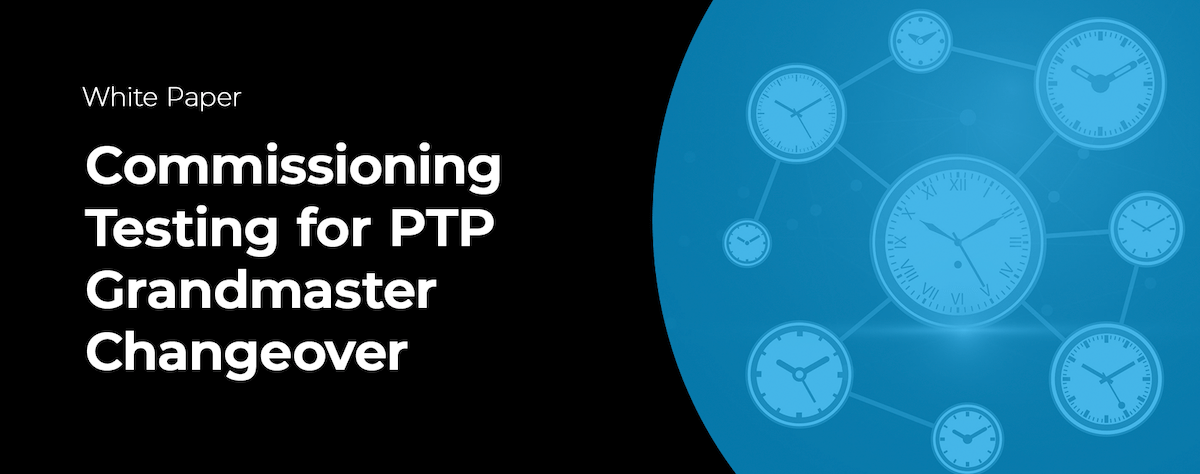Precision Time Protocol (PTP) is widely being adopted to synchronize modern media networks that use ST 2110 for video, audio, and data transport. PTP synchronization is required by the ST 2110 standard suite, so broadcast engineers must learn and understand the technology. PTP is more complex than traditional synchronization that uses analog black burst and tri-level signals distributed over coaxial cable. Therefore, broadcast engineers and network architects must also understand the system behavior for a variety of situations. As media networks are typically comprised of devices from multiple vendors, and no two networks are alike, we strongly recommend extensive testing when commissioning a new system.
One important aspect of PTP operations that warrants detailed testing is the Grandmaster (GM) changeover. Most PTP networks use multiple lead clocks such as the SPG9000 for redundancy to guard against various types of outages or failures. The Best Master Clock Algorithm (BMCA) selects one of these clocks to be the active GM. If that clock degrades, for example, when its GNSS signal is lost or when its network link is cut, the BMCA chooses another lead clock to become the active GM. In most cases, the transition is relatively seamless, and follower clocks locked to the GM will not see any significant time shift from the new GM.
However, in more complex networks with Boundary Clock (BC) switches in multiple layers of switch hierarchy (such as the common spine-leaf architecture), the changeover from one GM to another may not be as straightforward as one might expect. Further, a changeover due to clock degradation will transpire differently from a changeover due to a link failure or a loss of power.
We examine several types of GM changeover scenarios in a new whitepaper titled PTP System Commissioning: Grandmaster Changeover. In the paper, we discuss in detail the effects of both graceful changeovers and abrupt changeover events. We share the importance of performing detailed tests using tools like the Telestream PRISM waveform monitor and the Telestream SPG9000 sync generator when commissioning a new ST 2110 and PTP network to avoid disruptions. You can view the white paper here.
Understanding grandmaster changeover behavior is only one step in this process. Telestream has the tools and expertise to assist you throughout the entire journey. To learn more about PTP, check out our recent webinar on Mastering PTP Network Resiliency for ST 2110 Workflows here.

